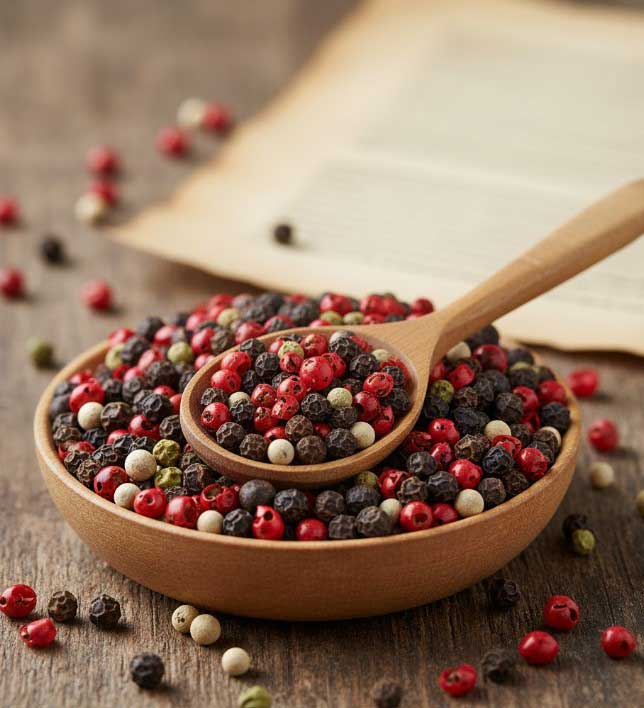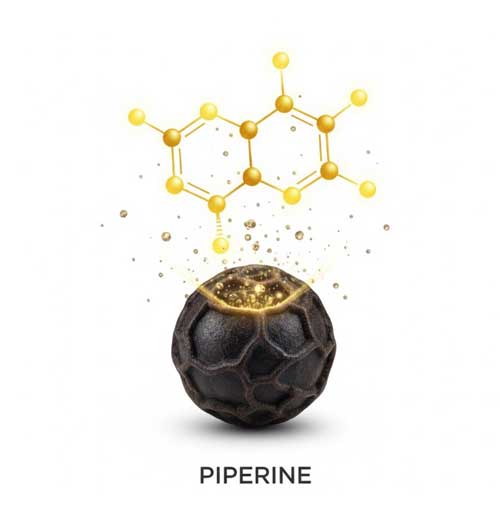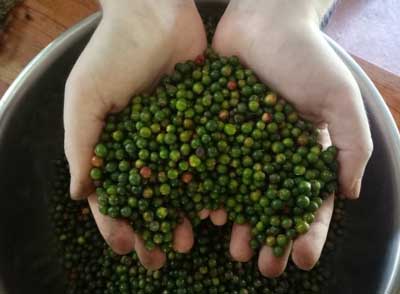
Uncover the historical significance of pepper and its medicinal use through time. From ancient remedies to modern science. Explore pepper’s healing journey now!
Pepper may be one of the world’s most common spices, but its importance extends far beyond the kitchen. Long before it became a staple seasoning, pepper was prized for its healing qualities. Across Asia, the Middle East, and Europe, it was valued as both food and medicine, believed to warm the body, aid digestion, and even ward off illness.
Modern research has confirmed that many of these traditional beliefs were not mere superstition. The compounds that give pepper its sharp flavour also contribute to a range of potential health benefits. From ancient remedies to current nutritional studies, pepper has always stood at the crossroads of flavour and medicine. Explore its medicinal use below.
From Ancient medicinal use to Global Spice
The medicinal story of pepper begins in India, where it has been used for over two thousand years in Ayurvedic medicine used under the name maricha. It was considered a warming spice that stimulates digestion, clears the lungs, and balances the body’s energy. Traditional healers often mixed it with turmeric and long pepper (Piper longum) in a preparation called Trikatu, believed to strengthen the immune system and boost vitality.
As pepper spread through trade routes to the Middle East and Europe, it kept its reputation as both a luxury and a remedy. Greek and Roman physicians prescribed it for stomach and respiratory problems, while medieval herbalists valued it as a stimulant and food preservative. Over time, pepper’s medicinal use became deeply rooted in many cultures — a spice linked not only with taste but with health and energy.
The Science Behind the Spice’s medicinal use

The key to pepper’s medicinal potential lies in piperine, the compound responsible for its characteristic heat. Piperine enhances the body’s absorption of nutrients and other bioactive compounds, which explains why pepper is often paired with turmeric — it can significantly increase the absorption of curcumin, turmeric’s main active ingredient.
Research has shown that piperine has several promising biological properties. It acts as an antioxidant, helping to neutralise free radicals that can damage cells. It also shows anti-inflammatory effects, which may support joint and digestive health. Some studies suggest that piperine could help regulate metabolism and blood sugar, although these findings are still being explored.
In addition to piperine, peppercorns contain essential oils such as limonene, pinene, and caryophyllene, which contribute to their aroma and may have mild antibacterial and immune-supporting effects. Together, these compounds explain why pepper has remained a part of folk medicine for thousands of years — it was effective, even if the science behind it was not yet understood.
Digestive Health and Circulation
One of the most traditional uses of pepper is as a digestive aid. The warming sensation it creates in the mouth mirrors its internal effect: it stimulates the production of saliva and digestive enzymes, helping the body break down food more efficiently. In many traditional cuisines, adding pepper to heavy or oily dishes was not only about taste but also about preventing bloating and discomfort.
Pepper’s stimulating qualities are also thought to improve circulation. In Ayurvedic medicine, this warming effect was said to “ignite the digestive fire,” encouraging energy flow and detoxification. Today, scientists would describe this in terms of mild thermogenic activity — pepper can slightly raise the body’s temperature and metabolism, making it a gentle natural stimulant.
Respiratory and Immune Support
Before the arrival of modern medicine, pepper was commonly used to ease respiratory ailments. When mixed with honey, it was a popular home remedy for colds, coughs, and sore throats. Its sharpness helped clear nasal passages, while its antibacterial compounds supported the body’s natural defences.
In some traditional systems, pepper was also used in warm tonics or teas to reduce mucus and relieve chest congestion. The vapours released from boiling pepper were believed to cleanse the lungs. While these remedies were based on observation rather than scientific trials, their effectiveness likely came from the spice’s natural anti-inflammatory and expectorant qualities.
Pain Relief and Anti-Inflammatory Effects
Pepper’s heat-producing compound piperine interacts with pain receptors in a similar way to capsaicin, the chemical found in chilli peppers. It can desensitise certain nerve pathways, which may help explain why topical treatments containing piperine have been studied for pain management and joint stiffness.
In laboratory settings, piperine has demonstrated potential to reduce inflammation in conditions such as arthritis. Although these studies are still in early stages, they reinforce traditional claims that pepper helps soothe aches and pains. Combined with its antioxidant capacity, this anti-inflammatory action makes pepper an intriguing focus for modern wellness research.
Antimicrobial and Preservative Qualities
Long before refrigeration, pepper played a practical role in food preservation. Its essential oils have antimicrobial properties that help inhibit the growth of certain bacteria and moulds. This explains why pepper was often added to cured meats, sauces, and pickles — not just for taste, but to help keep food safe to eat in warmer climates.
Modern studies continue to investigate these properties. Piperine and related compounds may slow bacterial growth in food and even support gut health by promoting beneficial bacteria. This dual role — preserving food and supporting digestion — has made pepper indispensable in kitchens and traditional medicine alike.
A Spice for Body and Mind

In many cultures, pepper has symbolised warmth, energy, and vitality. Ancient healers believed that it could lift the mood, sharpen the senses, and banish lethargy. Today, scientists are exploring how pepper’s medicinal use through active compounds might influence brain chemistry, including the regulation of serotonin and dopamine — two neurotransmitters linked to mood and focus.
Although research is ongoing, it is easy to see why pepper has maintained its reputation as a “life spice.” It brings heat to food, stimulates the body, and continues to intrigue both chefs and scientists.
Pepper’s medicinal use may no longer be its primary claim to fame, but they remain an important part of its story. Whether scattered over a meal or infused into traditional tonics, this ancient spice continues to offer warmth, balance, and vitality — a reminder that sometimes the most familiar ingredients hold the greatest power.